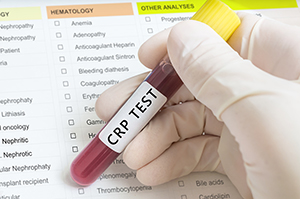



| By Dr. Ronald Hoffman
Aside from when I was studying the periodic table of elements, my knowledge of strontium occurred while reading Dr. Wright’s Guide to Healing With Nutrition, a wonderful book written in 1971 as a treatise for medical students that ended up being a popular press book. Dr. Jonathan Wright discussed how radio active strontium 90 could be found in human bone and could prevent the absorption of calcium in bone and lead to cancer. Of course this was of concern in the 1950s when above ground nuclear testing was in vogue. As a young student in nutrition 10 years ago, I actually pondered while reading that information, “I wonder what non-radioactive strontium would do to bone?”
Strontium has been safely used as a medicinal substance for more than a hundred years. It was first listed in Squire’s Companion to the British Pharmacopoeia in 1884. Subsequently, strontium was used therapeutically in the United States and Europe. As late as 1955, strontium compounds were still listed in the Dispensatory of the United States of America.
The processes of bone resorption and formation are tightly governed by a variety of systemic and local regulatory agents. In addition, minerals and trace elements affect bone formation and resorption through direct or indirect effects on bone cells or bone mineral. Some trace elements closely chemically related to calcium, such as strontium, have pharmacological effects on bone when present at levels higher than those required for normal cell physiology. The human body contains approximately 320 to 400 mg of strontium in bone and connective tissue. If we look at clinical studies, indeed, strontium was found to exert several effects on bone cells. In addition to its antiresorptive activity, strontium was found to have anabolic activity in bone and thus may have significant beneficial effects on bone balance in normal and osteopenic animals. Accordingly, strontium has been thought to have potential in the treatment of osteoporosis.
In a three-year, randomized, double-blind, placebo controlled study using 680 milligrams of strontium daily, women suffering from osteoporosis experienced a 41 percent reduction in risk of a vertebral fracture, compared with placebo. And, overall vertebrae density in the strontium group increased by 11.4 percent but there was a 1.3 percent decrease in the placebo group.
In a second study, 353 women who had suffered at least one vertebral fracture due to osteoporosis took varying levels of a prescription medication of strontium referred to as strontium ranelate or a placebo. The women who took 680 milligrams of strontium daily had an increase in lumbar bone mineral density of approximately 3 percent per year, significantly greater than placebo. By the second year of the study, there was a significant decrease in additional fractures in the strontium group as compared with the placebo group.
These studies, the benefits of strontium ranelate (reducing fracture risk by as much as 50 percent) and the history of strontium in medical practice were discussed as an editorial in the New England Journal of Medicine, Jan. 29th, 2004.
Further, scientists are looking into the benefits of strontium for osteoarthritis because researchers hypothesize that strontium might also improve cartilage metabolism; additionally there may be protection against dental caries since 10 percent of subjects that had no dental carries in a 10-year study sponsored by the U.S. Navy resided in a small town that had unusually high levels of strontium in the municipal water supply.
Strontium is available as strontium carbonate, strontium chloride, strontium sulfate, strontium gluconate and strontium citrate. In clinical research strontium gluconate was absorbed better than strontium carbonate. It is my clinical opinion that strontium citrate is absorbed better than the other forms of this mineral.
Remember that strontium is very closely related to calcium. They both utilize the same carrier protein for transport. Calcium will win this tug of war effortlessly. The take home message is to take strontium 4 hours away from calcium (preferably other minerals as well) before bed. Currently, I dose strontium at 681mg in one dose prior to bed (each strontium citrate capsule contains 227mg of pure strontium citrate = 3 capsules) on an empty stomach (defined as 2 hours after a meal).
Additional articles:
Ostera, A novel approach to osteoporosis
Natural approach to preventing osteoporosis by Hoffman Center Staff.
References
1.Marie PJ, Ammann P, Boivin G, Rey C., Mechanisms of action and therapeutic potential of strontium in bone. Calcif Tissue Int. 2001 Sep;69(3):121-9.
2. McCaslin, F.E., Jr., and Janes, J.M., The effect of strontium lactate in the treatment of osteoporosis. Proc Staff Meetings Mayo Clin. 1959, 34:329-334.
3. Marie, P.J., and Hott, M., Short-term effects of fluoride and strontium on bone formation and resorption in the mouse. Metabolism, 1986, 35:547-551.
4.Marie, P.J., Skoryna, S.C., Pivon, R.J., Chabot, G., Glorieux, F.H., Stara, J.F. Histomorphometry of bone changes in stable strontium therapy. In: Trace substances in environmental health XIX, edited by D.D. Hemphill, University of Missouri, Columbia, Missouri, 1985, 193-208.
5. Meunier, P.J., Slosman, D.O., Delmas, P.D., Sebert, J.L., Brandi, M.L., Albanese, C., Lorenc, R., Pors-Nielsen, S., De Vernejoul, M.C., Roces, A., Reginster J.Y. Strontium ranelate: dose-dependent effects in established postmenopausal vertebral osteoporosis-a 2-year randomized placebo controlled trial. J Clin Endocrinol Metab, May 2002; 87(5):2060-6.
6. Meunier, P.J., Roux, C., Seeman, E., Ortolani, S., Badurski, J.E., Spector, T.D., Cannata, J., Balogh, A., Lemmel, E.M., Pors-Nielsen, S., Rizzoli R., Genant, H.K., Reginster J.Y. The effects of strontium ranelate on the risk of vertebral fracture in women with postmenopausal osteoporosis, N Engl J Med, 2004, Jan 29;350(5):459-68.
7. Gaby, A.R. Preventing and Reversing Osteoporosis, Prima Publishing, Rocklin, CA, 1994.
8. Henrotin Y., Labasse A., Zheng S.X., Galais P., Tsouderos Y., Crielaard J.M., Reginster J.Y. Strontium ranelate increases cartilage matrix formation. J Bone Miner Res, 2001, Feb; 16(2):299-308.
9. Hall, D.A. The Ageing of Connective Tissue, Academic Press, San Francisco, 1976.
10. Reginster, J.Y., Deroisy, R., Dougados, M., Jupsin, I., Colette, J., Roux, C. Prevention of early postmenopausal bone loss by strontium ranelate: the randomized, two-year, double-masked, dose-ranging, placebo-controlled PREVOS trial. Osteoporos Int, 2002, Dec;13(12): 925-31.
Though we think of declining estrogen as the hallmark of menopause, it's actually common for…

Up to 12 percent of Americans have ulcers at some point in life. Peptic ulcers…
Gallbladder disease is a modern illness. An estimated 20 million Americans have gallbladder disease. The…

There’s more to GI health than whether or not to take an acid-blocker. All too…

In the latest attempt to remove “stigma” from medical terminology, liver specialists have come up…

Q: My husband’s high sensitivity C-reactive protein (hs-CRP) is 1.62 and his homocysteine is 13.1. If…

Banish the Bloat: Leyla Weighs In with Tips and Insights

Our virtual voicemail is open 24/7, so there's no need to wait to submit your questions for Dr. Hoffman. Leave a message, and you may hear your question featured on the Intelligent Medicine radio program!